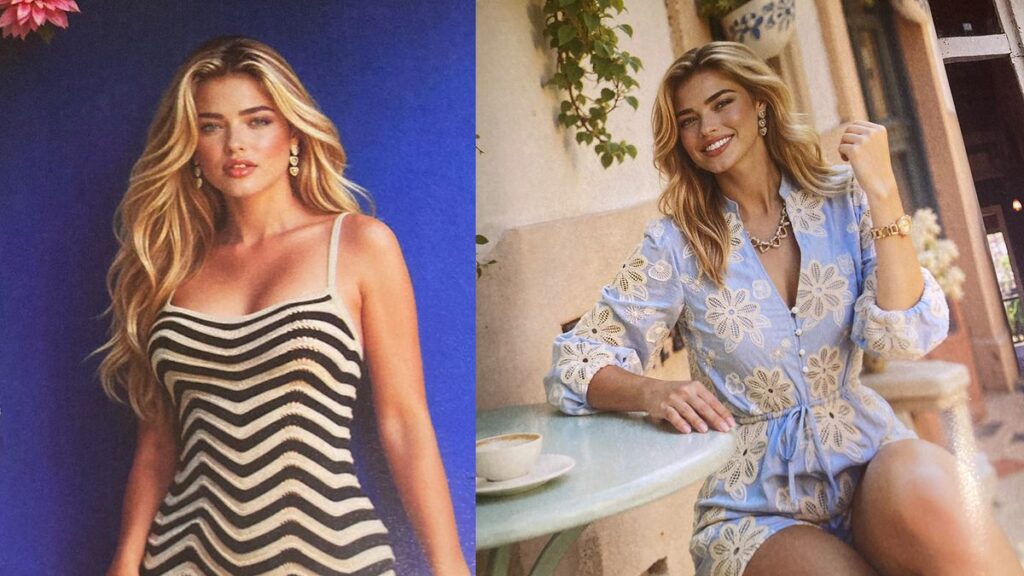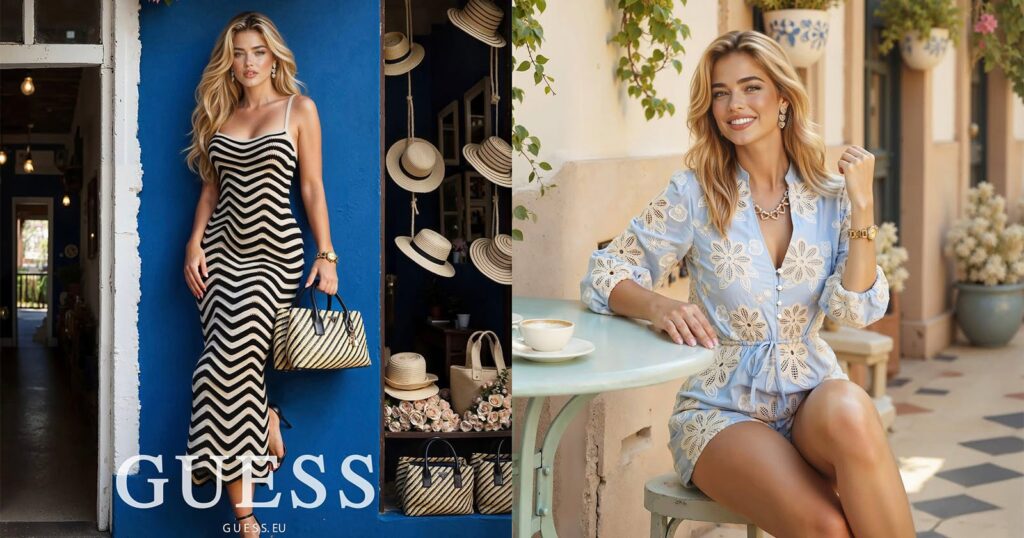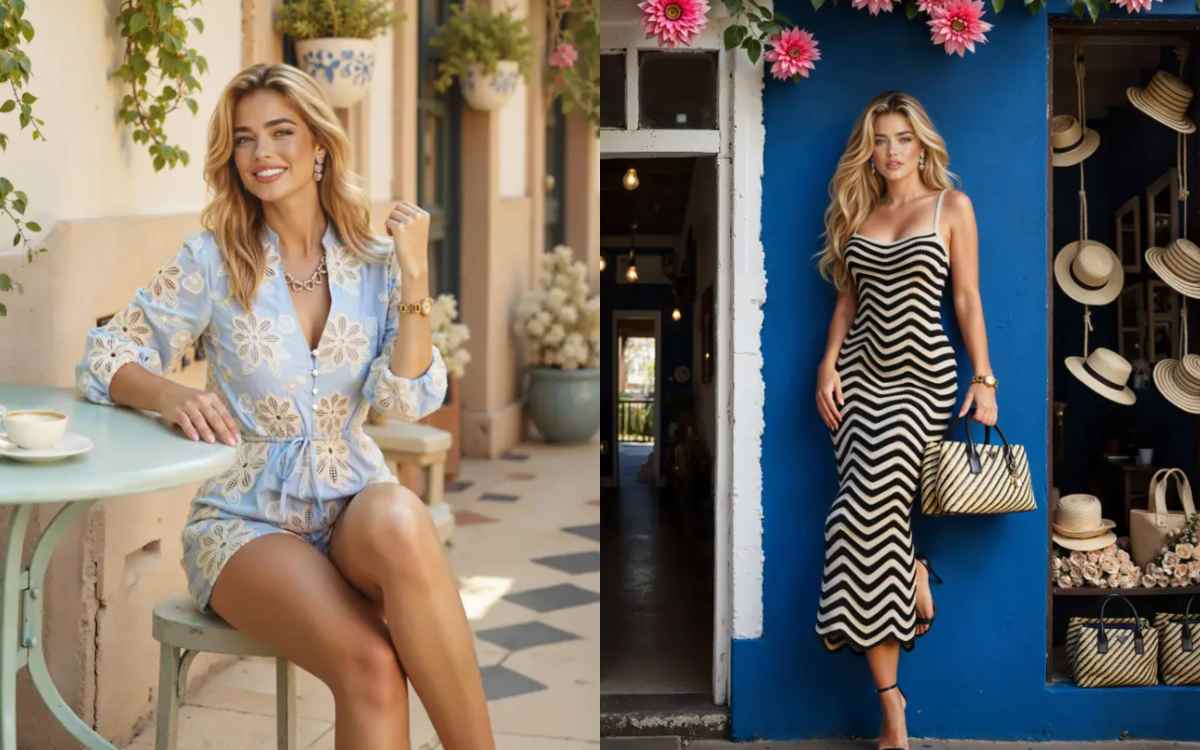In early 2023, a Levi’s ad made headlines not for its iconic denim but for who was wearing it. Or rather, what. A flawlessly rendered young woman of color, crafted entirely by artificial intelligence, posed in a denim overall dress. To many viewers, it seemed like a step toward inclusion. To others, it was a haunting sign that even diversity could be faked.
The moment sparked a deeper conversation far beyond fashion a debate about ethics, representation, and the cost of perfection in the age of AI-generated fashion ads.
Artificial Inclusion or Digital Exploitation?
Fashion has long struggled with diversity and inclusivity. For decades, the runway has been dominated by narrow beauty standards that exclude people of color, plus sized individuals, older bodies, and those with disabilities. When Levi’s partnered with AI modeling platform Lalaland.ai to digitally diversify their ads, it was, at best, a shortcut.
Critics were quick to point out the hypocrisy. New York Magazine famously dubbed the move artificial diversity, accusing brands of doing the bare minimum to appear inclusive without actually employing real human models from marginalized backgrounds.
Sarah Murray, a commercial model of color who saw the Levi’s ad in 2023, described her reaction to TechCrunch. It made me feel sad and exhausted Modeling is already hard enough without having to compete with digital standards of perfection. Her words echo a growing fear in the fashion world Are AI-generated fashion ads replacing authentic representation with pixel perfect imitations?
When Fashion Meets Automation: A Deeper Look
AI-generated fashion ads are not inherently evil. Proponents argue that they’re cost efficient, scalable, and can create endless visual assets for global campaigns. According to Lalaland.ai, digital models allow brands to display products on all body types and ethnic backgrounds, supposedly making fashion more accessible.
But here’s the rub brands are using AI to solve a problem they created. Instead of hiring diverse models, they render them. Instead of expanding opportunity, they digitize it.

Calvin Klein’s Real Diversity vs AI Diversity
In contrast to Levi’s, Calvin Klein launched a campaign in 2022 featuring a pregnant trans man, a move that earned both praise and pushback. But unlike Levi’s, the campaign employed real people with lived experiences. It sparked conversation, not controversy. The difference? Authenticity.
Dr. Jasmine Carter, a sociologist who specializes in media and representation, warns that the rise of AI in fashion is setting a dangerous precedent. Representation without real people is a lie. It’s like putting a Band Aid on a broken bone. You’re not solving the problem you’re disguising it.
Fashion photographer Alex Nguyen agrees. He’s worked with both AI models and human models, and the difference, he says, is unmistakable. AI gives you perfection. But perfection is boring. It’s the wrinkles, scars, awkward poses those are the things that make images human. That’s what sells a story.
The Human Cost of AI-Generated Fashion Ads
For many professional models, especially those from underrepresented communities, AI feels like another door being slammed shut. It’s not just about losing work it’s about being digitally erased.
Personal stories are flooding social media. One plus size Black model wrote on Instagram. When I saw a version of ‘me’ made by a machine, I cried. I’ve fought so hard to be seen. Now, even my reflection is being taken from me. The emotional toll is real. AI-generated fashion ads might offer technical innovation, but at what human cost?
The Business Side: Efficiency vs Ethics
It’s no secret why brands are turning to AI. Creating content with digital models is cheaper, faster, and more controllable. There are no scheduling conflicts, no bad lighting days, no ethical complications unless you consider replacing people an ethical issue. Marketing analyst Roberto Diaz says the trend is just getting started.
By 2026, we expect 30 to 40% of all digital product ads in fashion to feature AI models. It’s about scale and cost nothing more. But what about trust? Consumer trust, especially among Gen Z and millennials, is increasingly tied to authenticity. These consumers want real stories, real people, and real representation.
A Call for Ethical AI in Fashion
AI in fashion isn’t going away. But how it’s used must evolve. Here’s what ethical implementation could look like.
Hybrid Campaigns: Combine human models with AI for styling and visualization not replacement.
Consent and Royalties: Use AI only when the model has given full consent, and pay royalties when their likeness is used.
Transparency Labels: Clearly mark AI-generated images so consumers know what’s real and what’s not.
Brands that get this right can still innovate without alienating the very communities they claim to represent.

Fashion’s Digital Reckoning
The controversy around Vogue’s AI-generated fashion ads and Levi’s digital diversity experiment is a mirror. It reflects not just fashion’s priorities, but our society’s willingness to replace lived experience with artificial perfection.
Yes, AI has a place in the creative world but it should be used to elevate humanity, not erase it. As consumers, creators, and critics, we must ask: When did convenience become more valuable than truth? In the race for innovation, we must not forget the people behind the pixels.

